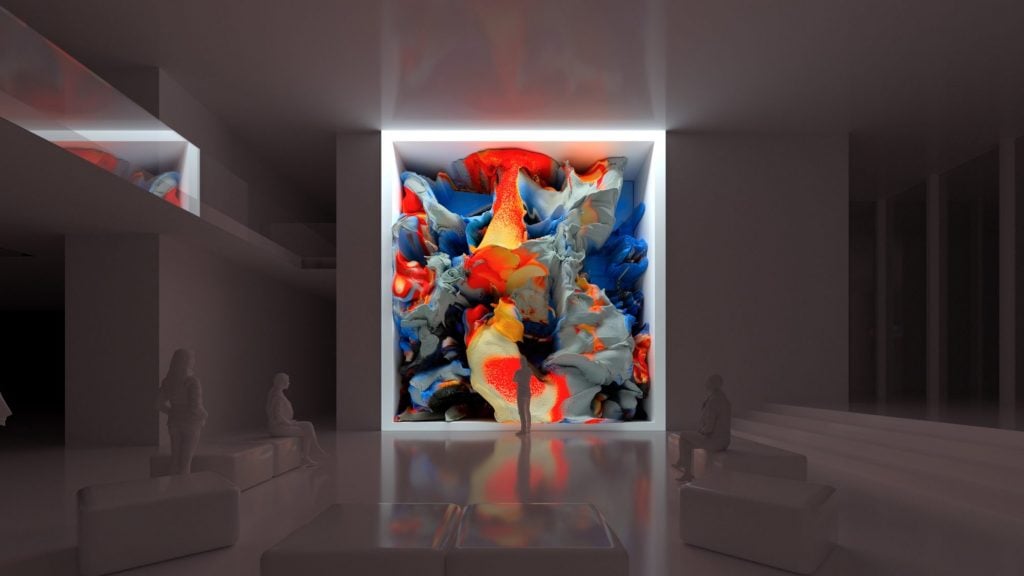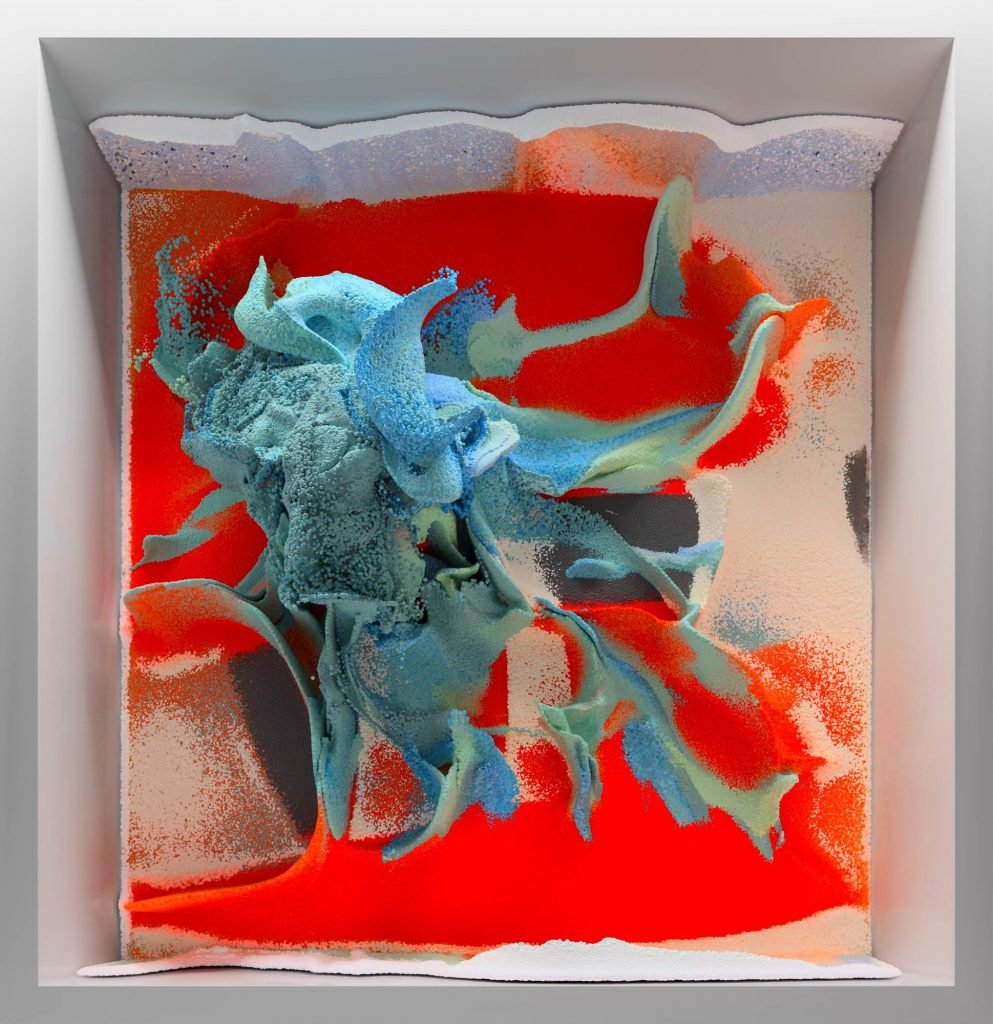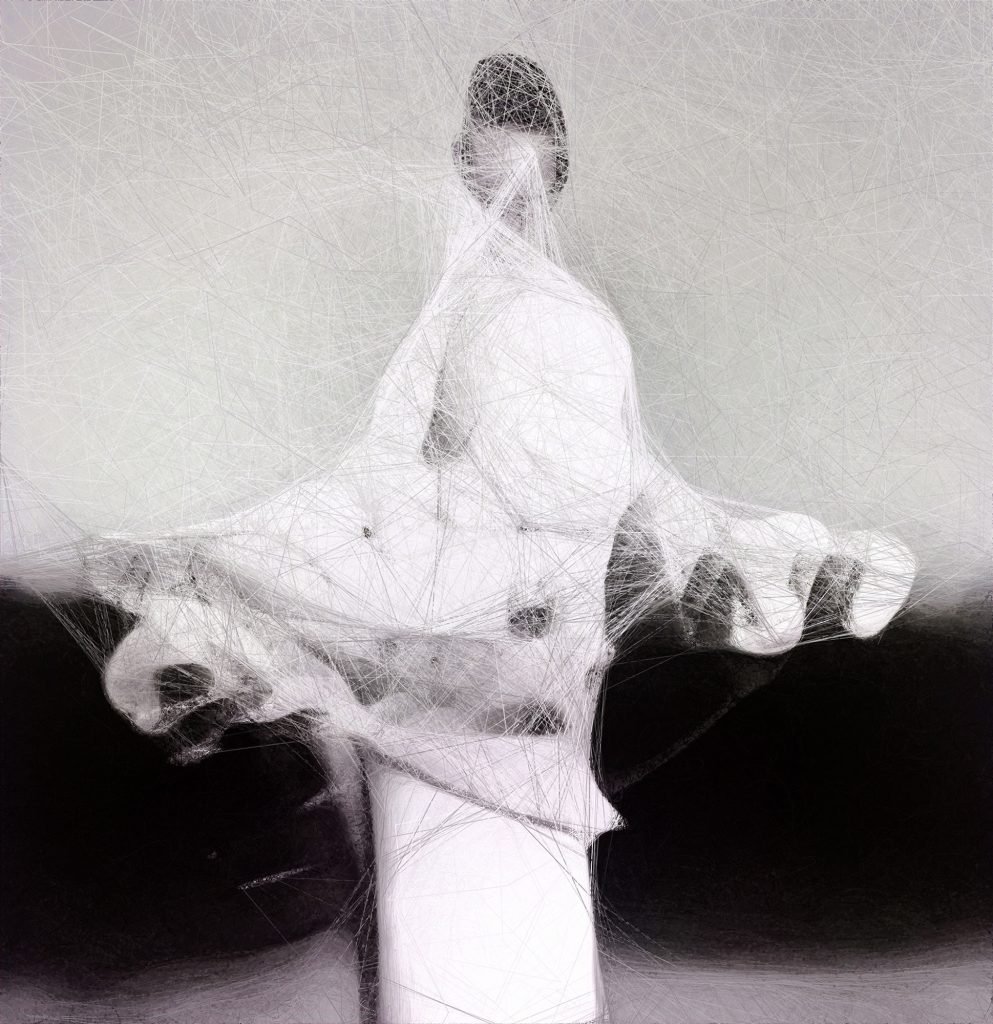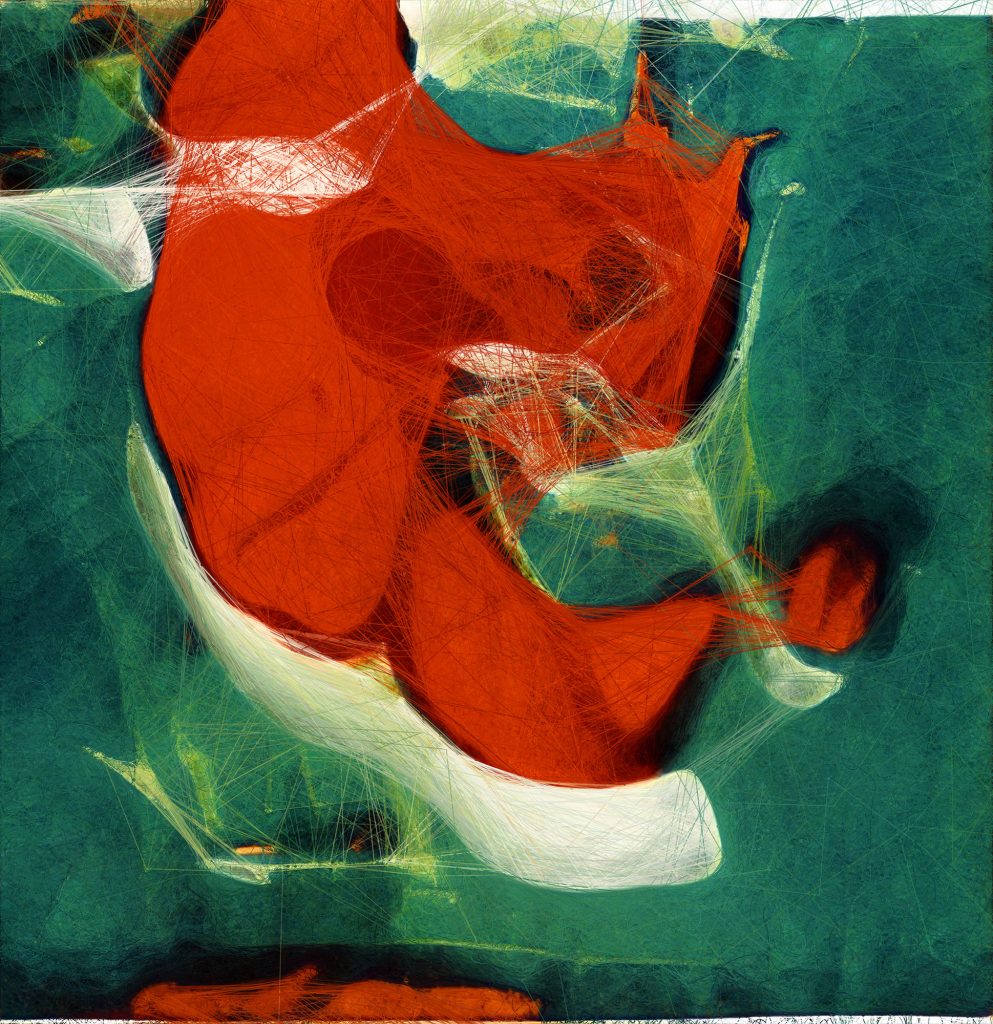Museums & Institutions
‘It’s All Machine-Made’: Crossover NFT Art Star Refik Anadol’s New Installation at MoMA Lets A.I. Do the Creating, Generating, and Dreaming
With 'Unsupervised,' the digital artist's A.I. work makes its major museum debut.

With 'Unsupervised,' the digital artist's A.I. work makes its major museum debut.

Richard Whiddington

Imagine the following proposition: after viewing all 130,000 works in the Museum of Modern Art’s collection, a person is asked to produce an artistic reflection. Assuming the individual hasn’t died of exhaustion, what might their work look like? This premise is at the heart of Refik Anadol’s Unsupervised, a newly unveiled project that feeds the museum’s collection into an A.I. that spits out ceaselessly shifting works of beguiling shape and color.
We know machines can learn, we know they can create (thanks to A.I. image generators), but, Anadol asks, can they dream or hallucinate? If these questions sound eerily similar to Philip K. Dick’s Do Androids Dream of Electric Sheep? it’s no coincidence. Anadol claims Ridley Scott’s film adaptation Blade Runner has haunted his thinking since boyhood, in particular the realization of the replicant Rachael that her memories have been implanted.
At MoMA, Anadol plays Eldon Tyrell, a man eager to see the dreams and memories of a machine burdened with 200 years’ worth of art images.
“We feel museums have a responsibility to support artists who are exploring and critiquing new technologies such as blockchain and artificial intelligence,” MoMA curators Michelle Kuo and Paola Antonelli told Artnet News. “With Anadol, we hope to give visitors a new experience and perception of art.”
Standing in MoMA’s cavernous lobby and watching Unsupervised work is certainly a novel experience. It fills a 24-by-24 feet screen with a restless sculpture, some mutant form that is crimson marshmallow one moment and luminescent cobweb the next. Blink and its form, texture, color is anew.

Courtesy MoMA
Strictly speaking, Unsupervised plays in three aesthetic styles, or what Anadol calls chapters. “We began 18 months ago and the chapters are basically artworks where we reconstruct the brain of A.I. and influence them,” Anadol told Artnet News, noting that two of the works are generative and the other is precomputed. “It’s all machine made. We don’t know which work will play when and how.”
In basic terms, Anadol uses a UMAP algorithm to reduce the dimensional complexity of the archive and scan it for similarities. The result is what the artist calls “a data universe.” This is then run through generative adversarial networks (GANs) programmed to produce the visual associations it learns as it reviews images. A curatorial touch is added with his team tinkering with parameters, such as the color, interconnectedness between data points, and the specific moment in time and space at which the work is created.
Set to run through March 2023, the installation is, surprisingly, Anadol’s first solo showing in North America. “I think a lot about the use of public spaces,” Anadol said. “I first came to MoMA in 2011 and to be in this location, [with Unsupervised being] one of the first things visitors see, is amazing.” These visitors are turned into unwitting creators through the real-time inputs including movement, light changes, and acoustic volume that Anadol has incorporated.
“The data visualizations are subtly inflected by this live feedback from the atmosphere, like a river affected by the wind,” said Antonelli and Kuo. “Unsupervised is open to chance and serendipity.”

Courtesy MoMA.
The installation brings to physical space a project that began online last year when Anadol minted his museum-trained hallucinations as NFTs on new-media platform Feral File. The move saw MoMA join a wave of elite cultural institutions from the Uffizi to the British Museum harnessing the hottest art trend of 2021.
After bruising lockdowns and with visitation well below pre-pandemic levels, Unsupervised didn’t simply engage with the latest digital art development, but also offered a new revenue source. The museum received 17 percent of primary sales and draws five percent of all secondary sales. A quick browse of Feral File shows a slow, yet steady trade of Anadol’s NFTs.
Seeing the collaboration as an opportunistic money grab, however—a charge pointed at some of the museum’s peers—would unfairly taint the project itself and MoMA’s track record of promoting creatives working at the intersection of art and technology.
“The primary success is Refik creating work from the extraordinary collection of images that represent MoMA’s collection,” Michael Nguyen, Head of Operations at Feral File’s parent company Bitmark, told Artnet News. “As we continue to work with both, we see Unsupervised as the start of more exciting things to come.”
As it showed in the 2017 exhibition “Thinking Machines,” which traced the early history of computer art primarily through works in its collection, MoMA has long been a venue that proactively seeks out and platforms emerging artistic practices. Other landmarks include launching its first website in 1995, and uploading its entire collection to GitHub in 2015. To go back even further, beginning in the early 1930s, the museum was one of the first U.S. institutions to start collecting photography, a medium that fell prey to the same accusations of undermining human creativity currently aimed at A.I. art.

Courtesy MoMA.
For much of the past decade, Anadol has been diving deep into the world of A.I. alongside data scientists, architects, and artists from his Los Angeles studio. His penchant for gargantuan datasets—think petabytes—began in 2017 when he discovered an open-source archive of 1.7 million cultural documents in Istanbul called SALT.
Leveraging the supercomputers and A.I. expertise at his disposal as a resident of Google’s Artists and Machine Intelligence project, Anadol used SALT to create immersive media installations that revealed unexpected connections between the documents. It’s a feat of mass data and grand projections he’s since repeated for the cities of Seoul and San Francisco, the Los Angeles Philharmonic, and Artechouse.
Unlike previous installations, however, Unsupervised tackles the aesthetic underpinnings of art itself, its mathematic, data-based qualities. As Leland McInnes, developer of the UMAP technique Anadol uses, told Artnet News, “It’s stunning to see my work used at MoMA. There are deep connections between abstract mathematics and art, and Refik Anadol’s work concretely realizes this interplay.”
At MoMA, Anadol takes visitors on a journey through time, one that considers alternate art histories, images that were never made, offshoots of movements that never branched out. But it also points at possible futures, collaborations between machines that perceive the imperceivable and humans that define that undefinable thing called taste.